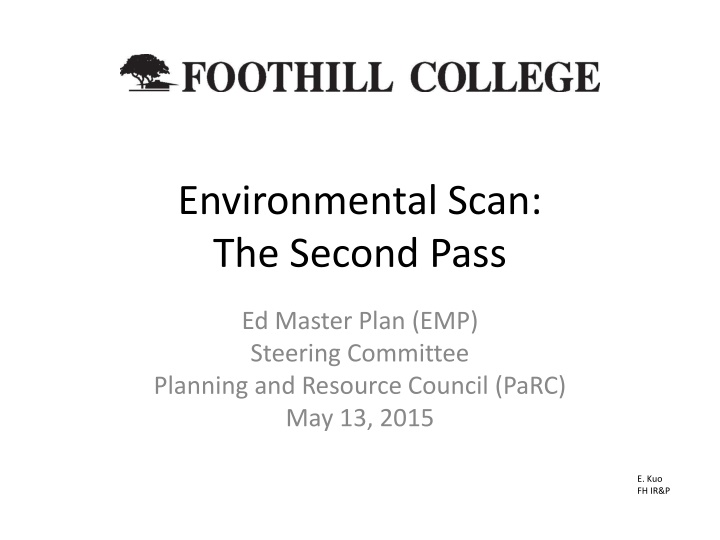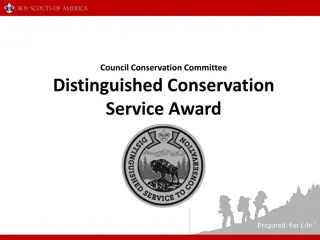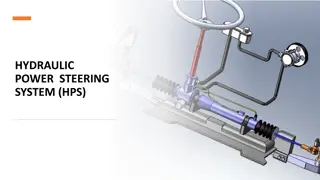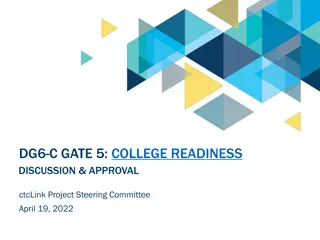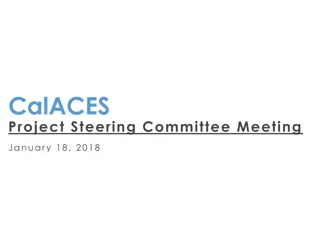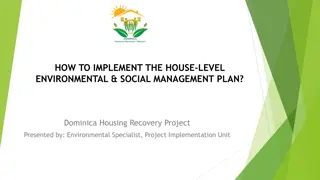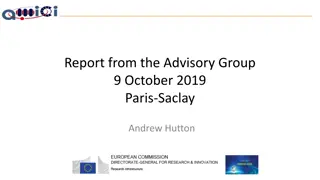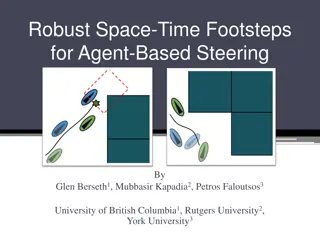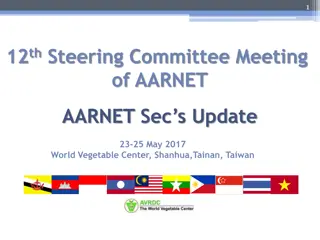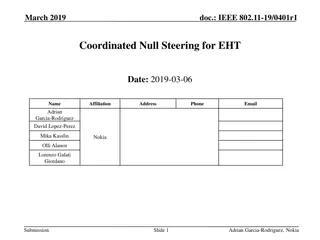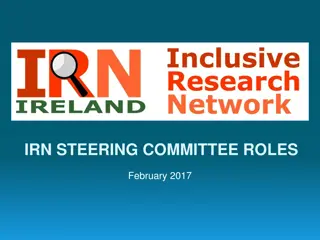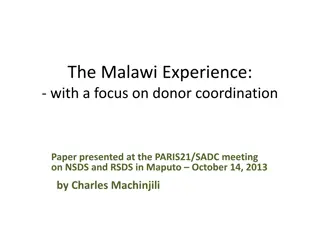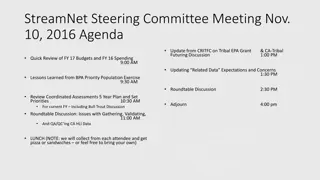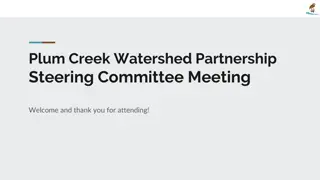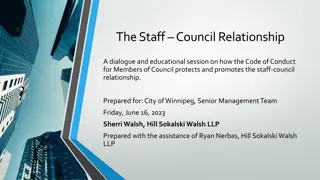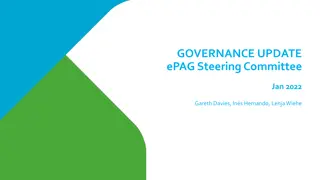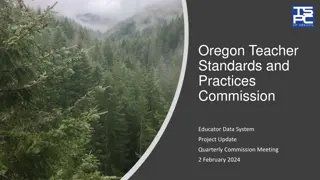ESMP Steering Committee Planning and Resource Council Overview
The Environmental Scan, EMP Steering Committee, and PaRC aim to review institutional goals, data, and set preliminary goals for Foothill. Strategic initiatives focus on building a community of scholars, collaborative decision-making, and action on access. The ESMP 2010-2020 highlights goals for student success, equity, retention, and resource stewardship. Dive into numbers, enrollment trends, and demographics to guide future actions.
Download Presentation

Please find below an Image/Link to download the presentation.
The content on the website is provided AS IS for your information and personal use only. It may not be sold, licensed, or shared on other websites without obtaining consent from the author.If you encounter any issues during the download, it is possible that the publisher has removed the file from their server.
You are allowed to download the files provided on this website for personal or commercial use, subject to the condition that they are used lawfully. All files are the property of their respective owners.
The content on the website is provided AS IS for your information and personal use only. It may not be sold, licensed, or shared on other websites without obtaining consent from the author.
E N D
Presentation Transcript
Environmental Scan: The Second Pass Ed Master Plan (EMP) Steering Committee Planning and Resource Council (PaRC) May 13, 2015 E. Kuo FH IR&P
Overview Review previous institutional goals Review data Quantitative Qualitative Identify what is important for Foothill What should frame the work we do What we can all work toward (faculty, staff, administrators, students) Identify preliminary institutional goals
ESMP 2010-2020 v1.0 Strategic Initiatives Building a community of scholars Promoting a collaborative decision-making environment Putting access into action
ESMP 2010-2020 v2.0 Goals Student success and achievement Improve student success, equity and retention Improve student outcomes and close the achievement gap Student access Engage with local communities to build bridges between the institution and those served Stewardship of resources Increase effectiveness in use of district and college resources
Rewind: Back in time (4/29/15) Internal scan Enrollment including city of residence Student demographics (F1 students, ethnicity) Course success (instructional method) Graduation Transfer
Enrollment Foothill College Fall Headcount Enrollment and Fiscal Year FTES 20,000 18,000 16,000 14,000 12,000 10,000 8,000 6,000 4,000 2,000 0 2009-10 2010-11 2011-12 2012-13 2013-14 2014-15* Headcount FTES Note: 2014-15 FTES is estimated based on P1 report. FHDA IR&P, ODA Declining trend in headcount and FTES Impact of repeatability
Enrollment Foothill College Fall Enrollment by Full-Time and Part-Time Status 100% 90% 80% 70% 60% 50% 40% 30% 20% 10% 0% 2010 2011 2012 2013 2014 Full-time Part-time FHDA IR&P, ODA Increasing trend of full-time enrollment
Enrollment Foothill College Fall Headcount by Ethnicity 50% 45% 40% 35% 30% 25% 20% 15% 10% 5% 0% African American Asian Filipino/PI Latino/a Native American White Other/Unk 2010 2011 2012 2013 2014 CCCCO Datamart Increasing African Americans and Latino/as F1 headcount increase by 27% (F10 to F14)
Enrollment Foothill College Fall Enrollment by Income Level 50% 45% 40% 35% 30% 25% 20% 15% 10% 5% 0% Less than $25K $25-$50K $50-$75K $75K-$100K More than $100K 2013 2014 CCCApply/Open CCCApply Students who applied and registered
Course Success Foothill College Course Success by Instructional Method 100% 90% 80% 70% 60% 50% 40% 30% 20% 10% 0% Fall 2010 Fall 2011 Fall 2012 Fall 2013 Fall 2014 Not online Online CCCCO Datamart Online and not online course success gap narrowing
Graduation Foothill College 2013-14 Certificates and Degrees by Ethnicity 100% 90% 80% 70% 60% 261 50% 317 40% 167 204 30% 132 20% 61 37 10% 30 20 8 5 1 0% African American Asian/F/PI Hispanic White Native American Other/Unkn Certificate Degree CCCCO Datamart Asians earn more certificates compared to others Whites earn more degrees compared to others
Transfer Foothill College Transfers to Four-Year Institutions 450 400 350 300 250 200 150 100 50 0 2009-10 2010-11 2011-12 2012-13 2013-14 UC CSU ISP/OoS CCCCO Datamart, UCOP, CSU Analytics CSU and UC transfers suggest increasing trend, but leveling off? Comparisons to other colleges?
Top Transfer Destinations UC system Davis, Los Angeles, San Diego CSU system San Jose, San Francisco, East Bay In-state privates University of San Francisco, Santa Clara University, University of Southern California Out-of-State Carnegie Mellon, New York University, University of Hawaii at Manoa, Arizona State University, Cornell University Endowed Colleges What s your guess? CCCCO Datamart, UCOP, CSU Analytics 14
Employees Foothill College Employees by Occupational Category Fall 2014 Administrator,4 % Classified Staff, 16% FT Faculty, 25% PT Faculty, 55% CCCCO Datamart
Employees Foothill College Employees by Occupational Category Fall 2010 to Fall 2014 400 350 300 250 200 150 100 50 0 2010 2011 2012 2013 2014 Administrator Faculty PT Faculty Classified CCCCO Datamart
Rewind: Back in time (4/29/15) External scan County demographics Educational level English language speakers Labor market (growth industries/occupations) Cost of living (income gap, housing, poverty)
County Population What is population for Santa Clara County in 2014? 1.9 million What is the projected population for Santa Clara County in 2020? 2 million Source: EMSI [2015.1 data] Centers of Excellence [Regional Labor Market Profile] 19
High School Graduates Foothill College Projected HS graduates by County and Year 20,000 18,000 16,000 14,000 12,000 10,000 8,000 6,000 4,000 2,000 0 Santa Clara San Mateo 2014-15 2015-16 2016-17 2017-18 2018-19 CDOF Projections anticipated to be flat
Community Interviews Seven sessions (April 13, 2015) Train for a supportive workforce For high-tech industry and related businesses Small business development Professional development for students Soft Skills (key for workforce) Internships Increase collaboration/partnerships Role of lifelong education
Campus Interviews 25 sessions and 129 participants April 28 & 29, 2015 One webinar May 6, 2015 (7-8 pm) Top themes: College Collaboration Student Services Planning Equity and Diversity 23
College Collaboration Encourage increase participation in shared governance Promote professionalism and mutual respect Increase transparency regarding college decision- making and planning (governance) Collaboration needed between instruction and student services Increase student voices in shared governance Recognize mistrust exists and work positively to reengage and communicate 24
Student Services Support for students with specific needs (homelessness, mental health, first gen, etc.) Expose students to multiple and alternative career paths Increase access to counselors (consider tech, intrusive counseling, etc.) Increase staffing Streamline application/registration as much as possible 25
Planning Reflect on previous EMP Increase discussion regarding the EMP, mission statement, the process, etc. Align resource prioritization and program review with the EMP Cultivate culture of program improvement, rather than reactive planning responses Increase dialogue--campus debates, campus newspaper, other forums/platforms 26
Equity and Diversity Increase/promote diversity among students and employees (enrollment and hiring) Make equity a priority Aim for high course success rates (>80%) Respond to Puente program needs Reinstate Mfumo 27
Other Campus Themes Instruction Pursue additional baccalaureate programs Online Ensure integrity of online education (cheating) Continue research looking at instructional method (online and not online), including access, success and pedagogy Ensure courses are not offered in online format only Find ways to increase sense of community online 28
Other Campus Themes Workforce Create more internships Increase options for dual track enrollment Develop more business partnerships Integrate labor market data in planning and decision- making Community Education Find ways to offer aging in place courses Respond more effectively to repeatability, lifelong learners needs Offer courses that keep up with training needed in technology related skills 29
Other Campus Themes Athletics Recognize this student group (support scholar athletes) May need accommodations due to travel Need for tutoring that is aware of athlete perspective, early alert International Students Offer noncredit multicultural class (intercultural communication) Help (all) students find affordable housing Increase intl and non-intl student interaction Develop intl student alumni base 30
Other Campus Themes FHDA Education Center Attract re-entry and workforce students Provide extensive offerings (for all times and expand subjects offered) View facility as a training center Facility should be current with technology Concern that Center may draw students away from main campus, reducing services there Ability to respond quickly to business needs (contract ed?) 31
Online Input Asking for feedback about Foothill s strengths, areas for improvement, areas to focus April 27 to May 8, 2015 124 respondents 103 students (83%) 1 Administrator (1%) 9 Classified staff (7%) 7 Full-time faculty (6%) 4 Part-time faculty (3%) 32
Online Input Among employees: Aware of mission statement 90% Aware that EMP is being revised 86% Aware of existing ed master plan (EMP) 71% Aware FHDA Ed Center is opening F16 62% 33
Online Input Foothill strengths #1: Affordability (51%) #2: Teaching #3: Transfer function #4: Instructional programs #5: Commitment to students #6: Curriculum #7: Online education 34
Online Input Foothill areas for improvement #1: Instructional programs (29%) #2: Campus Communication #2: Career/Workforce prep/enhancement #4: Community relations/partners #5: Shared governance #6: Use of technology 35
Online Input Foothill initiatives and goals #1: Improve outcomes among all students (38%) #2: Improve opportunities for professional dev. #3: Improve agility to address changing employment and economic conditions #4: Supporting instruction and services to traditionally underserved #5: Expand outreach/recruitment including to traditionally underserved #6: Increase sense of community involvement/engagement 36
Additional Comments? Thanks for Participating! http://www.foothill.edu/president/parc/esmp.php 37
